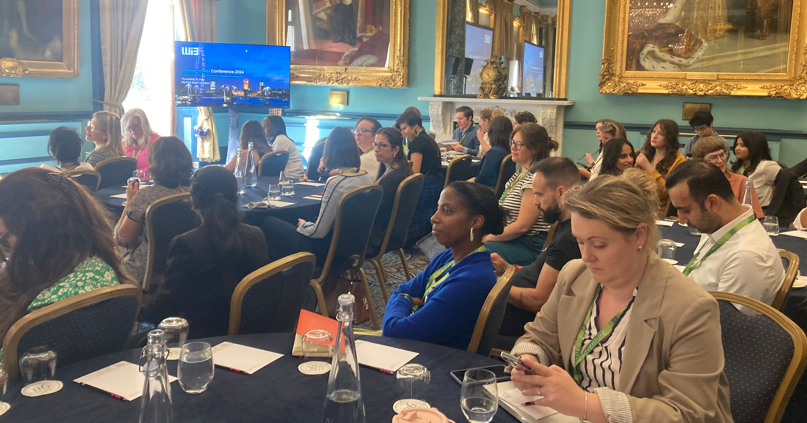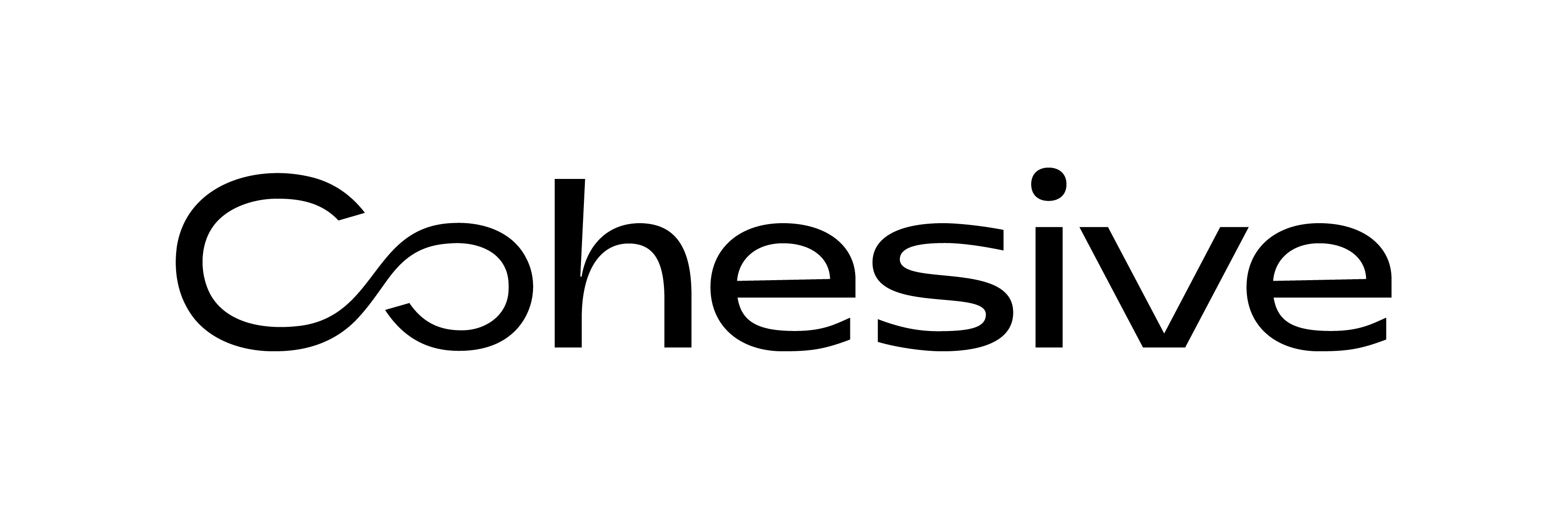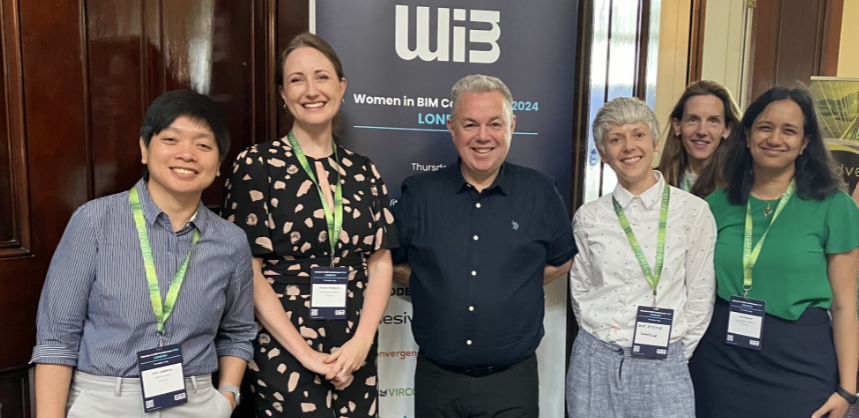July 4 2024, UK. Election day and change is in the air as pollsters predict the opposition will sweep into government, and citizens rush to cast their votes.
Away from the polling stations, at a packed event in central London, change and new perspectives are also the theme of the day. The venue is the glorious setting of the Institute of Directors, and the event is the Women in BIM conference 2024.
Founded in 2012 by Rebecca De Cicco, the former Principal, Digital Enablement at Aurecon, Women in BIM is a global community which seeks to support and inspire digital construction professionals, drive collaboration and provide a platform for addressing the pressing issues around a ‘digital first’ culture.
More than 200 professionals from across the architecture, engineering and construction (AEC) sector have gathered to network and listen to the line-up of inspiring speakers and panellists.

During the day, presentations from those directly involved in the digital AEC community are mixed with personal stories of resilience and discovery. The latter are delivered by Shona Hirons of Mindset in Motion (“My story makes people laugh and it makes them cry”) who has overcome significant adversity, and Baroness Helen Newlove, the Victims Commissioner who came to prominence after her husband, Garry Newlove, was murdered by three youths in 2007.
Master of Ceremonies for the day is Dave Philp, Cohesive’s Chief Value Officer and the Regional Lead for Women in BIM Scotland.
Across the presentations, three key themes stand out:
1.The need to adopt a human-centric approach to technology.
2.The role of robust, trusted data across so many areas – not just in design, construction and operation but in, for example, ESG.
3.The importance of resilience – in our data strategies, and also within ourselves.
AI and the AEC sector
An issue which is returned to throughout the day is AI with two panels devoted to the subject. One – “AI is moving so fast, can you afford to take a wait and see approach?” is chaired by James Austin, Technical Solutions Manager at Autodesk and features panellists including Cohesive’s Dr Victoria Fillingham, as well as Charlotte-Frances Garrett, Head of Industry Strategy at KOPE, Dr Claire Morris, Innovation Lead at Bridge AI (Innovate UK) and Drew Walter, Data Science Lead at AECOM. A second session, later in the day, is entitled: “Unlocking the door to an infinite realm of possibilities with generative AI in the built environment.”
The consensus is that, while the profession is on the right path, there is a long way to go before we see AI being used in earnest across the full breadth of the AEC industry.
Further guidance/research support is necessary to drive more governance around AI’s application. The risk otherwise is of models not fulfilling specific use cases and potentially skewing the output’s impact through inherent bias and incorrect training processes.
The need for built environment organisations to get to grips with AI and ensure their teams include the right roles and capabilities is a key point. Mariana Panitz Ramalho, Chief Operations Officer at Construflow, concludes: “AI won’t steal your job, but a person who knows how to use AI certainly will.”
The strong case of AI for driving construction safety by enhancing on-site construction processes through, for example, embedded automations, is also discussed.
A major opportunity for AI, some say, is in using historical data to understand where risks lie and address them in future programmes of work.
A central point was for need to consider the people/ human aspect of AI and not just the technology – fostering trust, looking at how it can complement human skills and strengths and ensuring that ethics and integrity are cemented into any AI strategy.
ESG
Sakshi Bansal, of Arup eloquently explained the need for robust data as part of any ESG strategy – not just for measuring core areas like carbon but also for areas like fair pay.
She added that, at present, most focus within ‘Environment, Social, Governance’ is on the ‘E’, with the ‘S’ suffering from middle child syndrome. “ESG isn’t all about the ‘E’,” she said, “let’s give some attention to the middle child, the ‘s’.”
Data CIA
Dr Karen Blay, Senior Lecturer in Digital Construction and Quantity Surveying and Director of Equality, Diversity and Inclusion at Loughborough University, introduces us to a new term – ‘Data CIA’ – Confidentiality, integrity and availability.
The core questions that AEC organisations must ask themselves, she says, are these:
1.Who is responsible for maintaining and enhancing data’s confidentiality, integrity and availability (CIA) in a connected environment?
2.Are we equipped and empowered to maintain and enhance data CIA?
3.What happens when data CIA is not maintained in a connected environment?
4.Who takes the blame?
Data vulnerabilities, she explains, come from a multitude of different areas. These include human errors, software bugs and process failures.
Organisations, Dr Blay says, must focus on being proactive, not reactive and have in place a data resilience strategy, with data governance, data access requirements and a clear position regarding data ethics.
Cutting carbon
Gabriela Martinez, represents the Allies and Morrison Design Technology team. She talks about material passports and the importance of ‘good’ data in driving a circular economy.
Allies is a strong promoter of embedding circularity in the design process and reducing the significant impact of the UK’s built environment on the planet, where it accounts for 50 per cent of all materials used and 60 per cent of waste.
Robust information management, Gabriela says, is key to enabling informed decisions on material analysis and reuse with ‘material passports’ a tool to support this.
To learn more about the Women in BIM network, visit: https://womeninbim.org/
To find out about the value-led digital solutions, advisory support and help with the people and change aspects of digital transformation that Cohesive provides, please contact [email protected]








